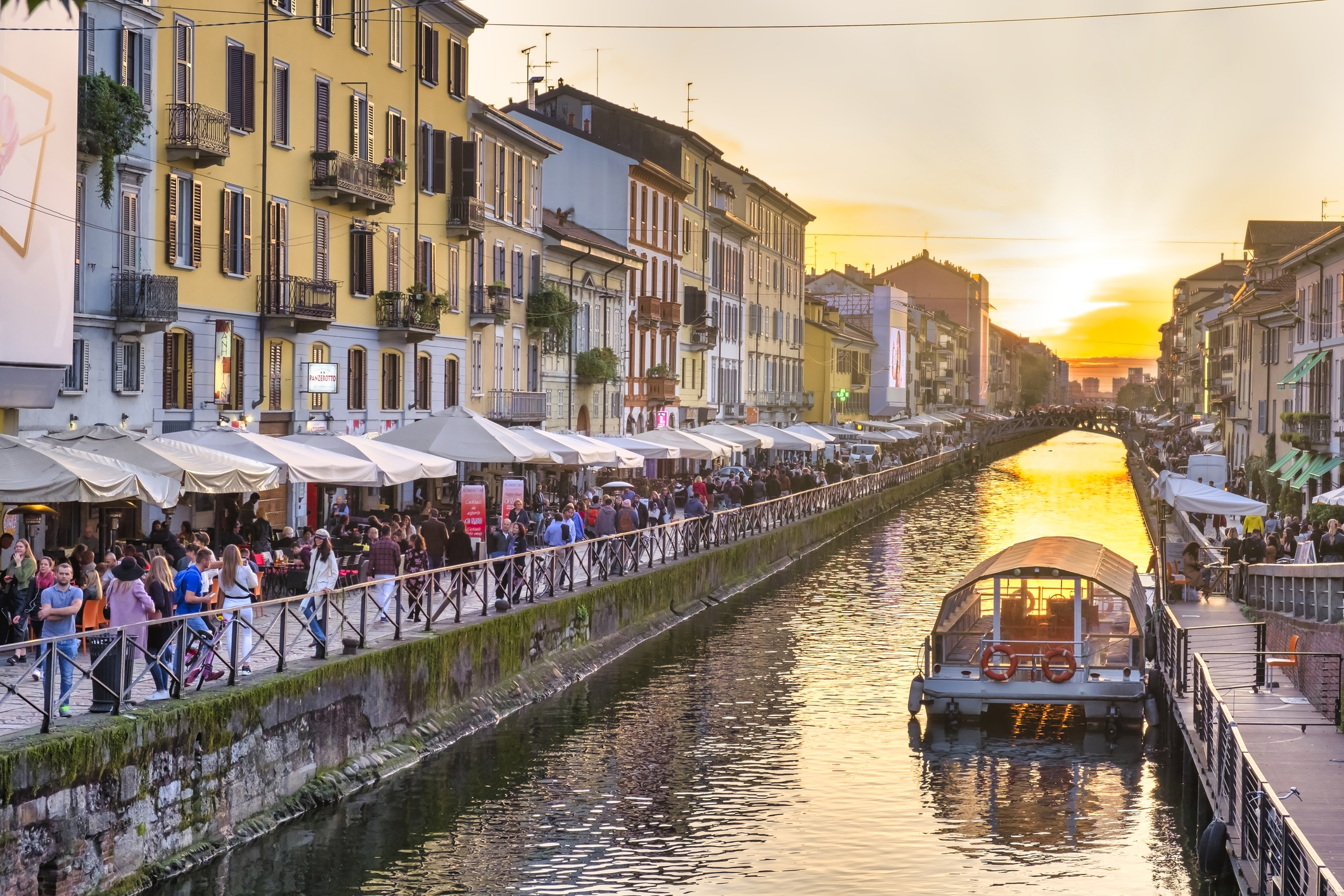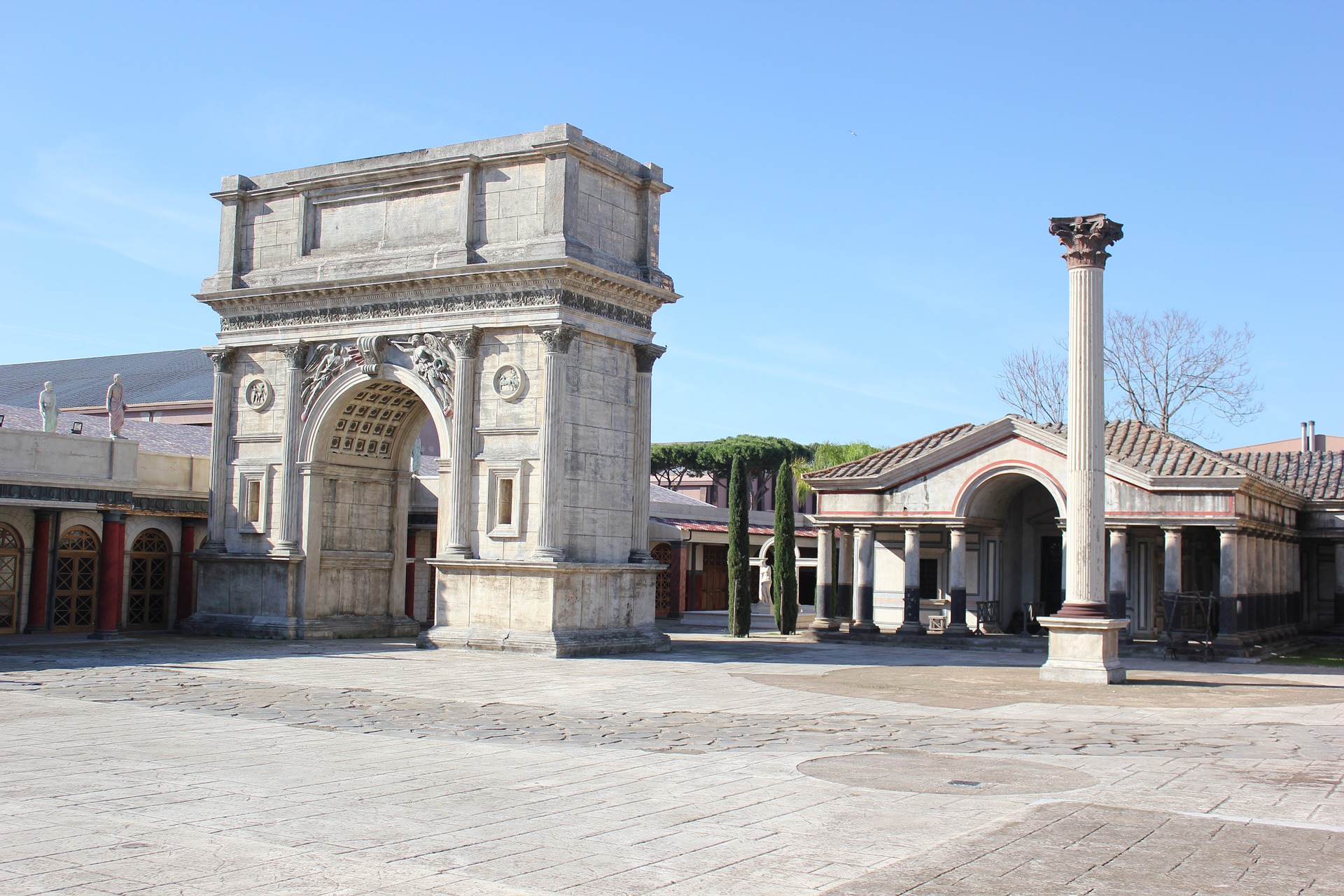If you are visiting Milan for Expo 2105, you might want to take advantage of other attractions the city offers its guests. Some of these are well known, others are virtually unknown, and all are worth seeing.
Among the classic sites is the Galleria Vittorio Emanuele II, which could be considered one of the world’s oldest shopping malls. The Galleria is housed within a four-story double arcade in central Milan and contains an impressive central octagonal space topped with a beautiful glass dome. It was built between 1865 and 1877, and named after the first king of the Kingdom of Italy.
The Galleria connects two of Milan’s most famous landmarks: the Duomo and the Teatro della Scala. The Duomo, or Milan Cathedral, is a gothic cathedral dedicated to St. Mary of the Nativity. Built over six centuries, the Duomo is the fifth largest church in the world and the largest in Italy, and one of the symbols of Milan.
Another attraction you can’t miss if you are in Milan is the famous Navigli, the old system of canals that interconnected Milan making it a navigable city. There were five canals: Naviglio Grande, Naviglio Pavese, Naviglio Martesana, Naviglio di Paderno, Naviglio di Bereguardo. Today, the canals are mostly derelict, unnavigable, or used for irrigation. However, they are a beautiful site to visit.
If you are fans of paintings, you shouldn’t miss the Pinacoteca di Brera, or Brera Art Gallery, the main public gallery for paintings in Milan, which has one of the most notable collections of Italian paintings. Together with the Pinacoteca, you can visit the Brera Observatory and the Orto Botanico di Brera, the historical botanic garden located behind the Pinacoteca.
Another famous attraction in Milan is the Last Supper, or l’Ultima Cena, one of Leonardo da Vinci’s masterpieces from the late 15th century, which soon became one of the major iconographies around the world. This is a mural painting in the refectory of the Convent of Santa Maria delle Grazie.
The Castello Sforzesco, or Sforza Castle, is a castle that was built in the 15th century by Francesco Sforza, at the time the Duke of Milan, on the remains of a 14th-century fortification. Later renovated and enlarged, in the 16th and 17th centuries it was one of the largest citadels in Europe. In 1891–1905, it was extensively rebuilt by Luca Beltrami, and today houses several of the city’s museums and art collections.
For those who also want to explore Milan’s surrounding area, there are many towns and churches around the city (within 100 kilometers). These little gems will take your breath away.
Among the churches we suggest to visit:
• San Pietro al Monte in the town of Civate, province of Lecco, around 54 km from Milan.
• San Miro al Monte in the town of Canzo, province of Como, around 61 Km from Milan.
• San Fidelino on the lake of Mezzola, province of Como, 114 km from Milan.
• San Benedetto in Val Perlana, province of Como.
• San Lucio in Val Cavargna, province of Como, 106 Km from Milan.
• San Pietro in Vallate in the town of Cosio Valtellino, province of Sondrio, 112 km from Milan.
• The Sanctuary of the Madonna of Cornabusa in the Valle Imagna, province of Bergamo, 72 km from Milan.
• Sant’Omobono Terme in Valle Imagna, province of Bergamo, 72 km from Milan.
• The Sanctuary of the Madonna of the Ceriola, in the province of Brescia.
• San Giovanni al Monte of Quarona, province of Vercelli, 105 km from Milan.
• San Lorenzo all’Alpe Seccio in Val Cavaione, province of Vercelli, 126 km from Milan.
There are then some unique “borghi”, in Italian the word for the ancient villages, which are worth to visit. Among these: Cannero Riviera (Vb), Cannobio (Vb), Cocconato (At), Fobello (Vc), Vogona (Vb), and in the region of Liguria, Sassello (Sv).































